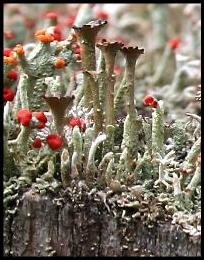
|
Last week in Cloverbuds we learned about Lichen. Lichen are very fascinating plants that live just about everywhere. They are very slow growing. Going on a walk looking for lichen will not take you long! They are a combination of fungus and alga (a form of algae). What we love about science and lichen is there is not a clear understanding of how these two species come together to form lichen. It is a mystery! What is assumed, given the success of the species, is the relationship between the algae and the fungus are symbiotic. Even I could have told you that! |
|
What I like about lichen is how simple they are to study. There are three basic kinds. Crustose, which means “crusty”, Foliose, which is “leafy” and Fruticose, which is “shrubby”. They are all very obvious to spot, and once learned, Malena can barely walk by a rock or tree that she is not pulling me over to show me which variety there is! We mostly found Crustose and Foliose around here. There have been some questionable “Fruticose” types, but we were not positive they were not, in fact, Foliose. To the right, these are a fine example of ‘leafy’ lichen. |
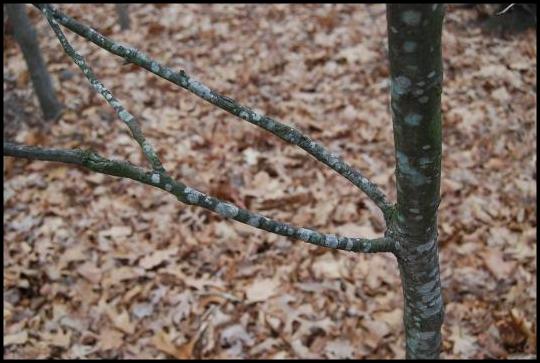
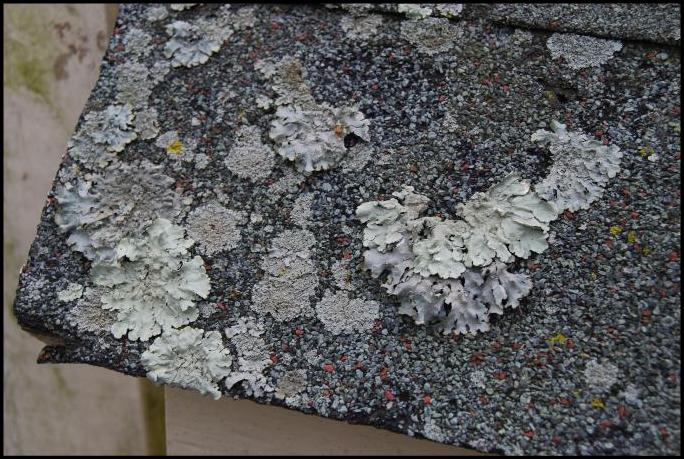
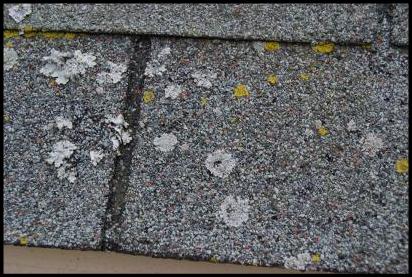
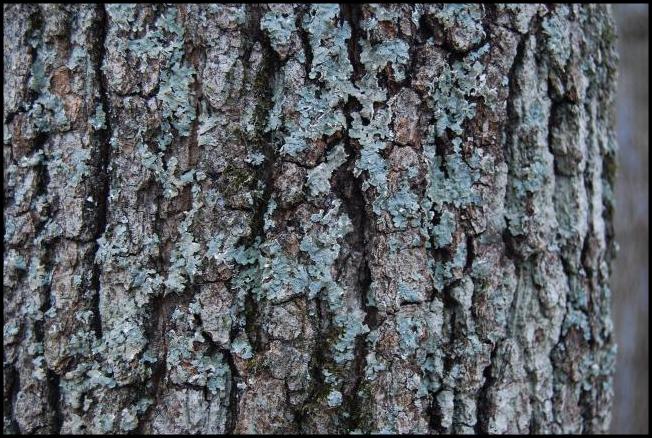
|
However, this is the most beautifully obvious form of leafy, or foliose, lichen. Do you see how they look like leaves? That is how you tell the difference. You can see some of the ‘crusty’ also on the same shingle. The crusty guys have no edge that lifts up like the leafy guys do. Another interesting thing about lichen is they seem to process toxins which may otherwise erode or damage rocks and trees. Lichen are slow growers, and pieces like this leafy one may have taken YEARS to grow! So, treat them gently!! |
|
Below and on the right you see examples of crustose, or ‘crusty’. However, we found the best crusty guys grew on rocks in the woods. We have plenty of woods, but only red sandstone here, and they don’t seem to like that. |
|
Lichen grow alongside other lichen (above) but also with various forms of moss and fungus. While I am pretty sure the tree has crusty lichen, because lichen has this spa like blue green color, I think if you see the bullseye looking grayish things those are actually fungus. Lichen reproduce by spores, much like ferns, but can also grow again if dislodged and it has the right conditions to regrow. |
|
Fungus? |
|
Uses of Lichen:
You may not think that lichen affects your daily life, but indeed these strange little critters are used for LOTS of different purposes. Here are a few:
Medicine: 50% of all lichen have antibiotic properties. They are used in a variety of medicines.
Dyes: Many lichen can me made into dyes, and have been over the centuries, especially by indigenous people.
Food source: Generally it would not be directly consumed, unless dire straights had set in, but here is a strangely disturbing tidbit...Icelandic people eat the lichen from the stomach of caribou and call it ’stomach ice cream’...now that is a new flavor for Hagen Daz! Garam Masala a key ingredient in Indian (the country) curry is uses lichen in its spice formation.
Other daily things you use which contain lichen include:
Alcohol Cosmetics Perfumes Decorations Fiber (as in clothing) Animal feed Feul Producing acids, antibiotics, carbohydrates and litmus Tanning Hunting, to lure prey in… Navigation Insect repellents Preservatives (for both food and beer) Poison (Indians –native– used it on arrowheads) Mummies, Rituals and Magic Tobacco and Narcotics
This information and more was found at the following sites:
Ethnolichenology—Wikipedia’s study of lichen Lichen—Wikipedia’s lichen page |
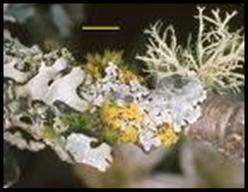
|
This is some examples of Fruticose, or ‘shrubby’ lichen. It should look like a little ‘shrub’. I think maybe some types of those air plants you buy that don’t need any water...are an example of this. |
